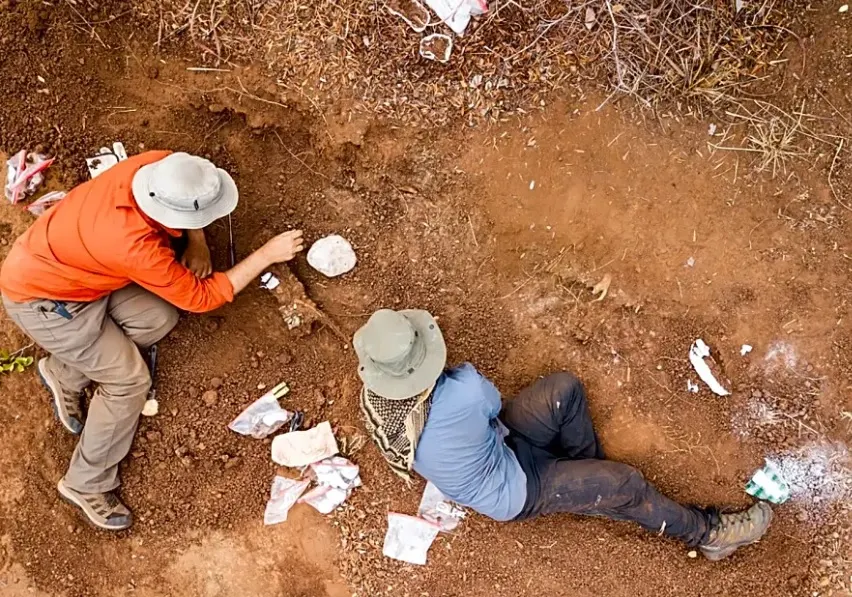The remains of a new species of plant-eating dinosaur were recently discovered in Zimbabwe. The Mbiresaurus raathi, named after the district of Mbire where it was discovered and paleontologist Michael Raath who first reported fossils in northern Zimbabwe, was found among several other Carnian-age fossils from the mid-Triassic period of the Mesozoid era that could help researchers understand how the climate influenced the dispersal of early dinosaurs.
 |
| Artistic rendition of Mbiresaurus raathi, which has been discovered in Zimbabwe. Credit: Andrey Atuchin |
Mbiresaurus raathi was a long-necked small head sauropod that ran on two legs, weighing around 30 kilograms, with leaf-shaped teeth.
"The Late Triassic rocks of Zimbabwe contain an extensive fauna which includes the oldest dinosaurs ever found in Africa, equivalent in age to the oldest dinosaurs found anywhere in the world. I am leading an active collaboration with the Natural History Museum of Zimbabwe to preserve these finds and place them into the context of the origin and rise of dinosaurs," says Christopher Griffin at Yale University, who found a dinosaur femur sticking out of the ground, dug around it and discovered a hip bone. Mbiresaurus raathi was unearthed on the second day of an expedition to Mbire in the Zambezi Valley in 2017.
“I kept digging, got more of the team to help out, and we recovered nearly the entire skeleton,” he says. “The rocks it was found in have been interpreted as a river deposit, and it may have been buried in a small-scale flood.”
 |
| Christopher Griffin works at uncovering fossils buried in the ground in Mbire, Zimbabwe in 2017. Credit: Murphy Allen for the Paleobiology & Geobiology Research Group at Virginia Tech |
Based on the presence of other fossils in the assemblage, the team has dated Mbiresaurus raathi to around 230 million years ago, part of the Late Triassic called the Carnian stage. At that time, Zimbabwe was much further south than it is today, and part of the massive supercontinent Pangaea.
This discovery is a stroke of luck for the Natural History Museum of Zimbabwe.
“The discovery of the Mbiresaurus is an exciting and special find for Zimbabwe and the entire paleontological field,” said Michel Zondo, a curator and fossil preparer at the Natural History Museum of Zimbabwe.
“The fact that the Mbiresaurus skeleton is almost complete, makes it a perfect reference material for further finds. It is the first sauropodomorph find of its size from Zimbabwe, otherwise, most of our sauropodomorph finds from here are usually of medium to large-sized animals,” he added.
“This is such an exciting and important dinosaur find for Zimbabwe, and we have been watching the scientific process unfold with great pride,” said Moira Fitzpatrick, the museum’s director, who was not involved in the study itself. “It has been a pleasure to work with Dr. Griffin and we hope the relationship will continue well into the future.”
 |
| Christopher T. Griffin (left) and the team in Mbire, Zimbabwe |
The research that went into these discoveries was contacted by Christopher T. Griffin, Brenen M. Wynd, Darlington Munyikwa, Tim J. Broderick, Michel Zondo, Stephen Tolan, Max C. Langer, Sterling J. Nesbitt & Hazel R. Taruvinga was published yesterday Wednesday 31 August 2022 in Nature.
Enjoyed reading this entertainment news report? Support Greedysouth by buying the team a cup of coffee. Your support assists in the production of such quality reports. Thank you.